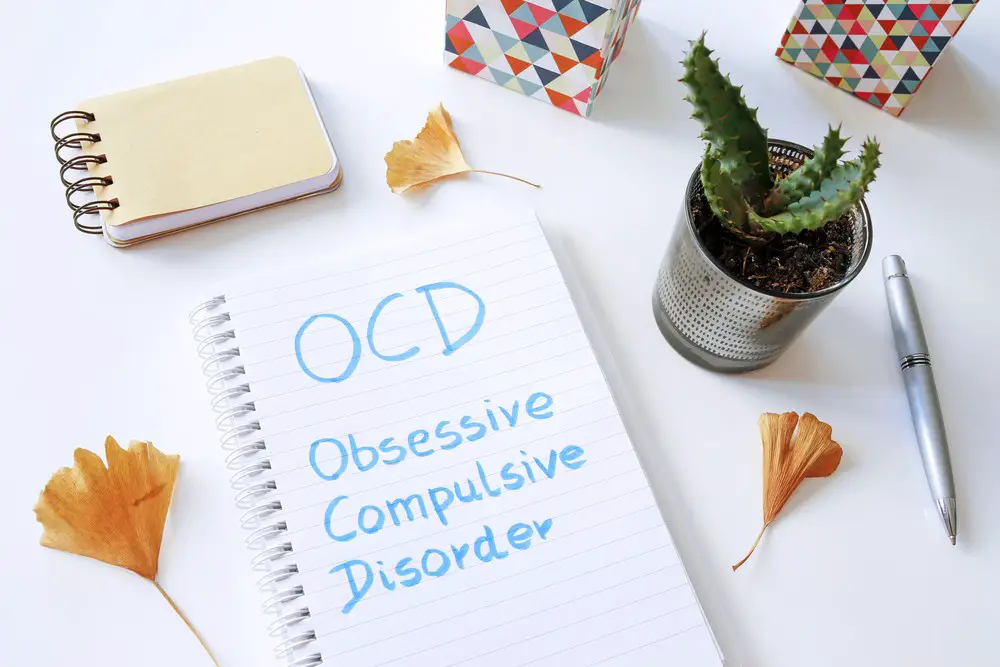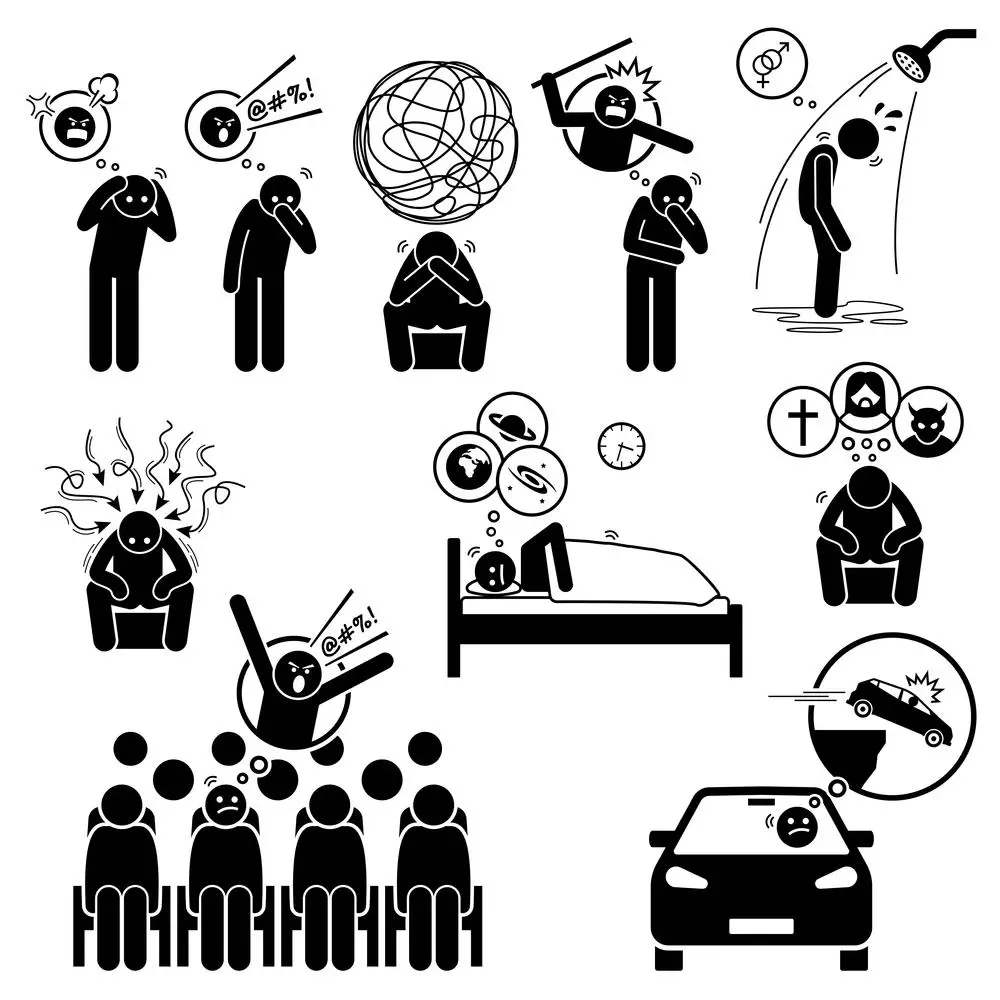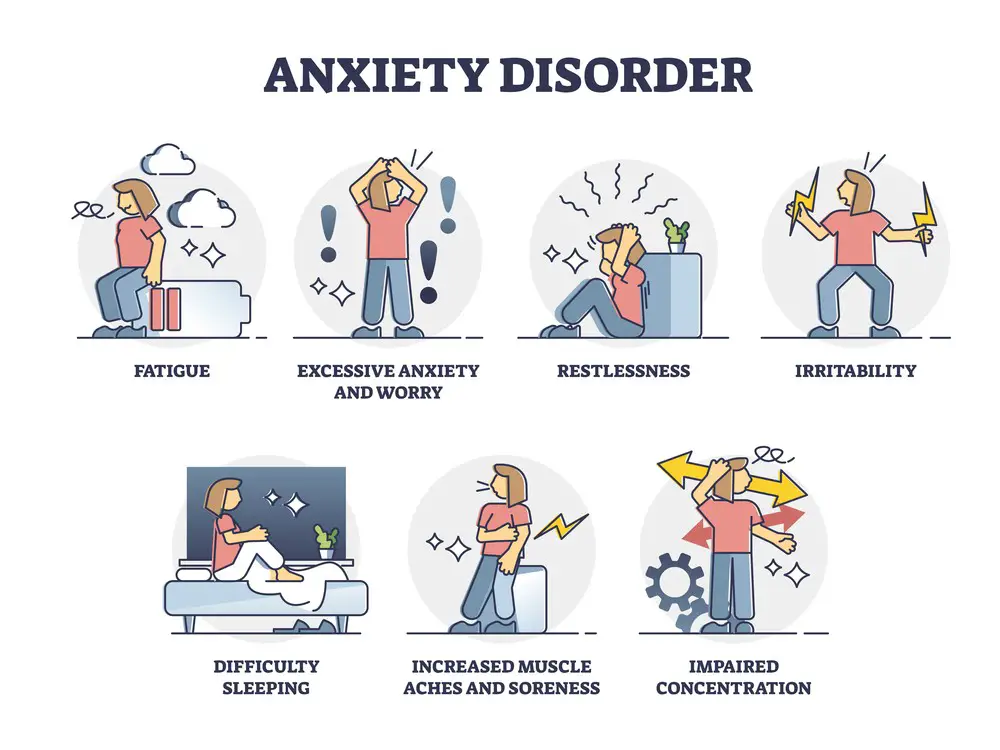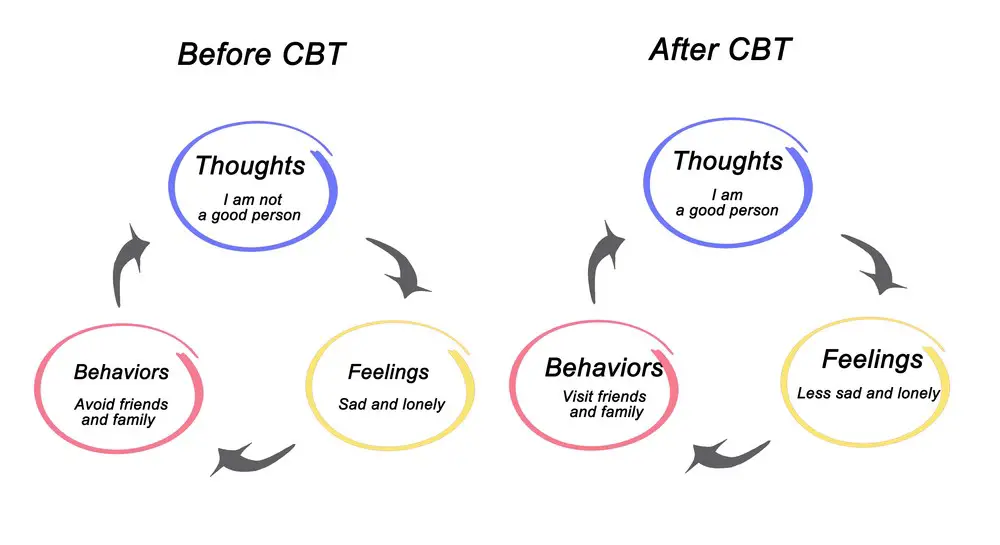Obsessive-compulsive disorder, or OCD, manifests in various ways, one of which is “just right” OCD. This subset of OCD involves a deep-seated feeling that things must be arranged in a particular way or that actions must be repeated until they feel “just right.” Understandably, trying to satisfy these urges can be incredibly time-consuming and distressing.
Suppose you are dealing with “just right” OCD. In that case, you may find that your day is filled with repeating tasks—like arranging objects symmetrically, rereading pages, or retracing steps—to attain a sense of completeness or perfection. Despite this, the relief from these compulsions is often temporary, leading to a relentless cycle that can feel impossible to break. Recognizing the emotional toll of “just right” OCD is the first step towards seeking help and understanding that this condition goes beyond a preference for order or routine; it’s an intrusive force that can disrupt daily life.
Key Takeaways
- “Just right” OCD is a form of OCD characterized by a need for things to feel perfect or just right.
- Compulsions are performed repeatedly to achieve temporary relief from anxiety.
- Acknowledging the emotional impact of “just right” OCD is crucial for seeking appropriate treatment and support.
 Understanding Just Right OCD
Understanding Just Right OCD
If you’ve been seeking a clear understanding of Just Right OCD, this section will explore what sets this subset of OCD apart and its various manifestations.
Defining the Disorder
Just Right OCD is a form of Obsessive-Compulsive Disorder where you feel a persistent and overpowering need for things to feel “just right” or perfect. Contrary to widespread misconceptions, OCD isn’t always about cleanliness or order; it’s a complex mental health condition characterized by intrusive thoughts and compulsive actions. In the context of Just Right OCD, actions are driven by an internal sensation rather than external factors like contamination fears.
- Perfectionism OCD: Often intertwined with Just Right OCD, this subtype involves an intense preoccupation with order and symmetry, where you might repeatedly arrange and rearrange items until they feel ‘perfect’.
- Tourettic OCD: This variant shares similarities with tic disorders, where you might feel compelled to perform a tic-like compulsion until a sense of ‘rightness’ is achieved.
Key Takeaway: Just Right OCD is about an internal discomfort that drives compulsions to achieve a sense of perfection or correctness.
Subtypes and Diverse Presentations
Just Right OCD can present itself in various ways, each experiencing it uniquely. Below, you’ll find some of the different forms and how they might affect your daily life:
- Symmetry and Organization: You may spend excessive time aligning objects ‘just so,’ ensuring everything follows a precise order or pattern.
- Sequencing or Counting: Engaging in routines or rituals involving counting or sequencing actions a certain number of times until it feels ‘right.’
- Sensory Triggers: Certain sounds, sights, or sensations can trigger discomfort, prompting actions to neutralize the sensation.
Not every experience will fit neatly into a subtype, and symptoms can often overlap.
Key Takeaway: Recognize that Just Right OCD is multifaceted, with symptoms ranging from the need for symmetry to sensory-driven compulsions.
Core Characteristics
Just Right OCD is marked by an intense feeling that things must feel just right or that one must perform specific actions until they feel ‘perfect’.
Symptoms and Recognition
You might notice that the need to have things feel just right translates to extensive periods spent arranging objects until they feel precisely aligned. This urge stems from an uncomfortable sensation of incompleteness or an intuition that something is off. The symptoms of Just Right OCD can often be recognized by:
- An overwhelming sense of discomfort that eases only when things appear perfectly symmetrical or ordered.
- A compulsion to read, speak, or perform tasks repetitively until they feel correct to you.
Key Takeaway: Recognizing Just Right OCD involves noticing repetitive behaviors to reduce discomfort from a sense of incompleteness.
 Common Obsessions and Compulsions
Common Obsessions and Compulsions
Your obsessions might involve a persistent, nagging feeling that objects are improperly arranged or that a task is not done perfectly. Here’s what to look out for with Just Right OCD:
- Obsessions:
- Preoccupation with symmetry, exactness, and order.
- Incessant doubts about whether actions have been performed correctly.
- Compulsions:
- Adjusting and rearranging objects continually.
- Repeating tasks or rituals (like locking a door) until they ‘feel right’.
The drive behind these compulsions is often an attempt to alleviate the stress caused by obsessions. Triggers for these behaviors can include almost any daily activity or stimulus that sparks a sense of discomfort or anxiety over incompleteness or imperfection.
Key Takeaway: Common obsessions and compulsions revolve around a need for perfection, leading to repetitive behaviors to quell anxiety.
 Emotional Impact of Just Right OCD
Emotional Impact of Just Right OCD
Just Right OCD is characterized by a need for things to feel just right, which can cause significant emotional turmoil. This condition may lead to persistent and intense feelings of anxiety and difficulty dealing with the inherent unpredictability of life.
Anxiety and Distress
You might find yourself experiencing high levels of anxiety when things do not feel just right. Here are some specifics:
- Obsession: The persistent thought that something is not quite perfect can escalate into an obsession, causing significant anxiety.
- Fear: You may fear the consequences of things not being perfect or just right, leading to intensified distress.
Key Takeaway: Your anxiety stems from an intense need for precision, and you might fear potential adverse outcomes if things are not aligned with your sense of ‘just right.’
Coping with Uncertainty
Living with Just Right OCD means facing the challenge of coping with uncertainty. Here’s how you might tackle it:
- Tension: The inevitable uncertainty of life can result in a constant state of tension.
- Strategies: Using mindfulness or cognitive-behavioral techniques can help you navigate the discomfort.
Key Takeaway: While uncertainty can heighten tension, there are practical strategies that can aid you in managing these feelings more effectively.
 Compulsions in Detail
Compulsions in Detail
Compulsive behaviors in Just Right OCD are actions you feel compelled to perform repeatedly. These behaviors are often linked with a sense of incompleteness or uneasiness until things feel ‘just right.’
Types of Compulsive Behaviors
- Counting: You may find yourself counting steps, tiles on the floor, or items to ensure they reach a certain ‘right’ number.
- Arranging: Objects around you might need to be aligned perfectly and symmetrical, leading to repetitive adjusting until they look ‘just perfect.’
- Touching: Sometimes, the urge to touch objects a specific number of times or in a particular order can be overwhelming.
- Fixing Behaviors: There’s often a strong need to adjust or move items until they feel perfectly placed.
- Checking: You may repeatedly check doors, appliances, or switches to ensure they are in the ‘right’ state.
- Cleaning: An intense pressure to clean or organize objects can be central, not necessarily due to fear of germs, but to alleviate discomfort.
Key Takeaway: Recognizing these behaviors can help you understand and acknowledge their role in your experience with OCD.
Role of Compulsions in Maintaining OCD
- Reassurance: Compulsions often serve as a temporary relief from anxiety, acting as reassurance that everything is in order.
- Cycle Reinforcement: Regularly yielding to compulsions can reinforce the OCD cycle, maintaining the disorder over time. Each time you give in, it’s like pressing a ‘reset’ button, eventually leading you back to square one.
Key Takeaway: Being aware of how compulsions contribute to the persistence of your OCD is crucial in seeking effective treatment strategies.
Psychological Concepts and Mechanisms
In this section, we’ll dive into how perfectionism and intrusive thoughts weave into the fabric of Just Right OCD, drawing a clear picture of the psychological underpinnings. You’ll discover why certainty and perfection become entwined in a relentless loop of anxiety and compulsions.
Perfectionism and OCD
Perfectionism often sits at the heart of Just Right OCD. You might find yourself caught in an exhaustive quest for certainty, driven by a belief that everything must be perfect.
- Hallmarks of Perfectionism in OCD:
- An overwhelming need for order: You may feel compelled to arrange items symmetrically or perform tasks precisely.
- Intolerance of uncertainty: Even a sliver of doubt can trigger intensive double-checking behaviors.
Key Takeaway: Recognizing the traits of perfectionism in your behavior is the first step towards understanding your OCD and developing strategies to manage it.
 Intrusive Thoughts and Anxiety
Intrusive Thoughts and Anxiety
Intrusive thoughts fuel the engine of anxiety within Just Right OCD. Imagine your mind as a theater, where unwanted thoughts barge in like uninvited actors on stage, causing distress and unease.
- Characteristics of Intrusive Thoughts:
- Persistent: They recur despite your attempts to ignore or suppress them.
- Distressing: They often provoke significant anxiety because they clash with your values.
Responses to Intrusive Thoughts:
- Attempting to neutralize thoughts with other thoughts or actions.
- Seeking reassurance to quell the anxiety that these thoughts can induce.
Key Takeaway: Understanding that intrusive thoughts are a common element in OCD, you’re not alone, and they don’t define your character can be a monumental step in your journey towards coping effectively.
The Role of Environment
Your surrounding environment plays a pivotal role in just right OCD, influencing both the onset and the severity of symptoms.
Environmental Triggers
- Physical Spaces: You might find certain rooms or places trigger the need for things to feel ‘just right.’ This can include symmetry or arrangement concerns in:
- Public areas (parks, offices)
- Personal spaces (rooms, desks)
- Objects: Daily items could become a focal point for obsessive behaviors, like arranging books in a precise order or positioning household items ‘perfectly.’
- People: Interactions with specific individuals might precipitate your OCD symptoms, especially if they disrupt your sense of order or routine.
- Changes: Modifications in your home environment or significant life changes can act as catalysts, disrupting your sense of balance and control.
Key Takeaway: Be aware of places, things, and people that might set off your OCD symptoms, and prepare strategies to manage these triggers.
Impact on Daily Life
- Routine Disruptions: Common environmental triggers may cause repeated checks or rearrangements, which can be time-consuming and emotionally draining.
- Stress Management: High-stress environments tend to exacerbate just right OCD symptoms, making it harder to keep them in check.
- Social Implications: Your relationships may be affected, as social situations can introduce unpredictable elements into your environment.
Key Takeaway: The impact on your daily life can be significant, but recognizing how your environment affects you is the first step in managing just the right OCD symptoms.
Cognitive-Behavioral Perspectives
Cognitive Behavioral Therapy and Exposure and Response Prevention are fundamental components in treating Just Right OCD, focusing on modifying thought patterns and behaviors.
 Cognitive Behavioral Therapy (CBT)
Cognitive Behavioral Therapy (CBT)
CBT is a well-established form of psychotherapy that helps you identify and change negative thought patterns driving your obsessions and compulsions. To manage Just Right OCD, CBT revolves around:
- Understanding Your Triggers: Recognizing what sets off your OCD symptoms.
- Challenging Intrusive Thoughts: Learning to question and refute irrational beliefs about your obsessions.
- Changing Behavior Patterns: Adopting healthier ways to cope with anxiety without resorting to compulsive behaviors.
Key Takeaway: Utilizing CBT, you’ll gain tools to combat the negative thought cycle contributing to your OCD and start replacing them with more balanced, constructive thinking.
Exposure and Response Prevention (ERP)
ERP is a type of CBT specifically tailored for OCD, and it’s especially effective if you’re struggling with compulsions and avoidance behaviors. This approach includes:
- Gradual Exposure: Facing your fears in a structured, step-by-step way.
- Begin with less challenging situations and gradually work up to more difficult ones.
- Preventing the Compulsive Response: Learning to resist the urge to carry out your usual compulsions.
- This helps break the cycle between your obsessions and the compulsive behaviors intended to neutralize them.
By progressively working through fears without turning to compulsions, you’ll gradually diminish your OCD symptoms.
Key Takeaway: ERP empowers you to confront your fears safely, diminishing their control over you and reducing your need for compulsive behaviors.
 Other Treatment Approaches
Other Treatment Approaches
While Cognitive-Behavioral Therapy (CBT) is a frontline treatment for Just-Right OCD, other methods may complement or serve as alternatives depending on your specific needs.
Medication and Pharmacotherapy
Selective Serotonin Reuptake Inhibitors (SSRIs) are often the go-to medications prescribed to help manage symptoms of Just-Right OCD. You’ll find a shortlist of commonly used SSRIs below:
- Fluoxetine (Prozac)
- Sertraline (Zoloft)
- Paroxetine (Paxil)
- Fluvoxamine (Luvox)
You must work closely with your healthcare provider since these medications require careful monitoring and dosage adjustments.
Alternative and Supportive Treatments
In addition to medication, exploring a range of supportive treatments can bolster your coping strategies. Here’s what might support your journey:
- Peer Support Groups: Sharing experiences and strategies can provide comfort and insights.
- Exercise: Regular physical activity can reduce stress and improve mood.
- Mindfulness Techniques: Activities like meditation can enhance your control over OCD thoughts and compulsions.
Remember that these approaches are most effective in a comprehensive treatment plan. You must consult with your healthcare professional before starting any new treatment.
Management and Recovery
Conquering Just Right OCD requires a tailored approach that encompasses coping mechanisms and dedicated treatment strategies aimed at reducing the severity of obsessions and compulsions.
Living with Just Right OCD
You know the repetitive thoughts and urges that drive you to perform certain actions until they feel ‘just right’. Coping day-to-day can be a challenge. Here’s what you can do to make it more manageable:
- Acknowledge Your Feelings: Recognize that your obsessions are part of OCD and not reflections of your personality.
- Educate Yourself: Understanding Right OCD is a fundamental step in managing it.
- Build a Support System: Connect with others who understand what you’re going through, whether through a support group or with friends and family.
- Seek Professional Help: A therapist can guide you through treatment options.
- Maintain a Healthy Routine: Exercise, eat well, and get enough sleep to help manage stress levels.
Key takeaway: Acknowledging the challenge is a brave first step towards managing Just Right OCD.
Strategies for Recovery
To move toward recovery, consider these targeted strategies:
- ERP Therapy: Exposure and Response Prevention (ERP) therapy is a core treatment where you’re gradually exposed to your OCD triggers and learn to resist the urge to perform compulsions.
- Medication: In some cases, medications, such as SSRIs, can help manage symptoms.
- Mindfulness: Practices like mindfulness can increase your tolerance for discomfort and reduce the power of obsessions.
- Set Realistic Goals: Work with your therapist to set achievable recovery goals.
- Celebrate Progress: Small victories are still victories. Recognize your progress.
Key takeaway: Recovery might not be a straight path, but with these strategies, you can take confident steps toward a balanced life.
Resources and Support
When grappling with Just Right OCD, knowing where to turn for help is crucial. A wealth of resources and support systems are within reach, and tapping into these can make a world of difference in managing this mental health condition.
International OCD Foundation (IOCDF):
A prime resource is the IOCDF, an organization dedicated to helping those affected by OCD. They provide access to:
- Local and online support groups
- Educational materials
- Therapist directories
Support Groups:
Connecting with others who understand your experience is invaluable. Support groups offer:
- Shared experiences
- Coping strategies
- A sense of community
Online platforms like HealthUnlocked and OCD Forums also host vibrant support communities.
Local Resources:
Don’t overlook local mental health clinics and hospitals that often host OCD support groups. Your healthcare provider can guide you to nearby options.
Awareness and Education:
Knowledge is your ally. Websites like Psych Central offer articles that increase awareness and understanding of OCD.
Key Takeaway:
You’re not alone in this. A rich tapestry of resources is accessible to aid you on your journey towards wellness. Tap into the IOCDF, join support groups, and seek local resources to empower yourself with knowledge and community support.
Frequently Asked Questions
Exploring frequently asked questions helps clarify common concerns about ‘Just Right’ OCD. Here, we address effective treatments, their distinction from perfectionism, medication options, their correlation with autism, their impact on daily lives, and resources for further understanding.
What therapies are effective in treating ‘Just Right’ OCD?
Cognitive-behavioral therapy (CBT), specifically Exposure and Response Prevention (ERP), is highly effective for ‘Just Right’ OCD. Some people also benefit from mindfulness-based treatments and Acceptance and Commitment Therapy (ACT). Your therapist will guide you through personalized strategies to manage OCD’s challenges.
Key takeaway: Personalized CBT and ERP are top treatment choices.
How do the symptoms of ‘Just Right’ OCD differ from those of perfectionism?
‘Just Right’ OCD symptoms are driven by an intense need for things to feel ‘perfect’ or ‘just right’ to reduce anxiety, which can result in compulsive behaviors. In contrast, perfectionism doesn’t necessarily involve compulsions, and anxiety might not be the primary motivator, often driven more by high personal standards.
Key takeaway: Compulsions and anxiety distinguish ‘Just Right’ OCD from perfectionism.
Can medication be beneficial for managing ‘Just Right’ OCD, and what options are available?
Yes, medications such as selective serotonin reuptake inhibitors (SSRIs) can be helpful. Medications like fluoxetine, sertraline, and clomipramine are commonly prescribed. It’s important to consult your doctor, as they’ll consider factors unique to you before prescribing medication.
Key takeaway: SSRIs may help, but a doctor’s guidance is crucial.
What is the relationship between ‘Just Right’ OCD and autism spectrum disorders?
Some research suggests a higher prevalence of OCD symptoms, including ‘Just Right’ feelings, in individuals with autism spectrum disorders (ASD). Both conditions involve rigid behaviors and struggles with change. However, the underlying reasons for these behaviors may vary between the two.
Key takeaway: There’s a notable overlap, yet the reasons for behaviors can differ.
How does ‘Just Right’ OCD impact day-to-day activities like writing and organizing?
‘Just Right’ OCD can make routine tasks time-consuming and stressful. For instance, writing may involve numerous revisions to feel ‘correct,’ while organizing could entail aligning objects with precision. These rituals can disrupt productivity and cause frustration.
Key takeaway: Daily tasks can become prolonged and distressing.
Are there any recommended books or resources for understanding ‘Just Right’ OCD more deeply?
“Overcoming Obsessive-Compulsive Disorder” by David Veale and Rob Willson is enlightening. Additionally, the International OCD Foundation website provides extensive information and resources. Both offer valuable insights into OCD and strategies for management.
Key takeaway: Trusted books and organizations offer in-depth OCD insights.
- The Burnout Epidemic: Why We’re All Feeling Overwhelmed and How to Cope - February 9, 2024
- How to Live a Peaceful Life - February 9, 2024
- Useful Information You Should Know About Health Screenings - February 8, 2024
This site contains affiliate links to products. We will receive a commission for purchases made through these links.


 Understanding Just Right OCD
Understanding Just Right OCD Common Obsessions and Compulsions
Common Obsessions and Compulsions Emotional Impact of Just Right OCD
Emotional Impact of Just Right OCD Compulsions in Detail
Compulsions in Detail Intrusive Thoughts and Anxiety
Intrusive Thoughts and Anxiety Cognitive Behavioral Therapy (CBT)
Cognitive Behavioral Therapy (CBT) Other Treatment Approaches
Other Treatment Approaches

